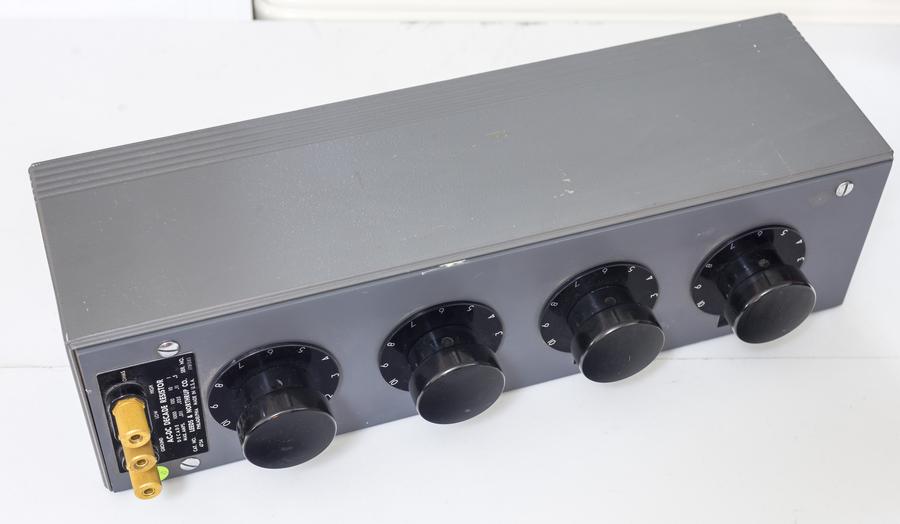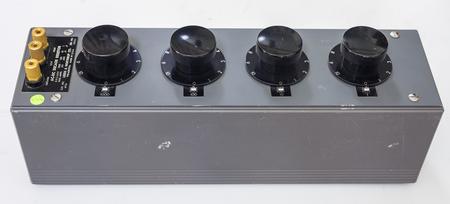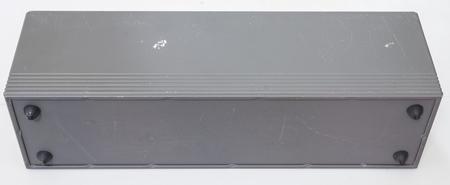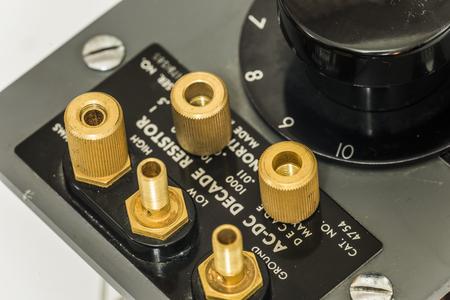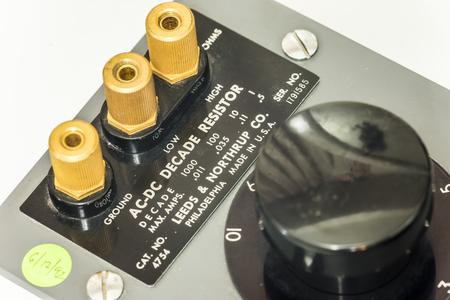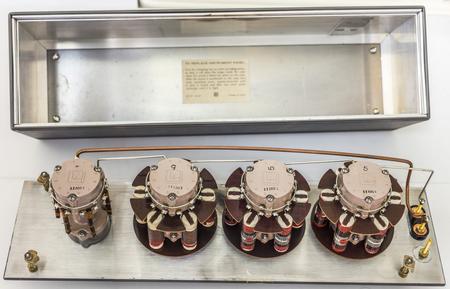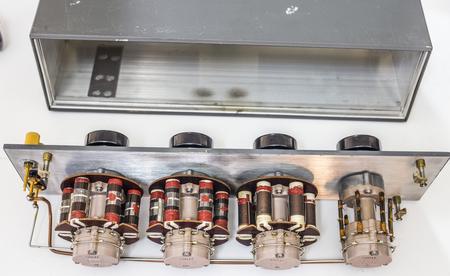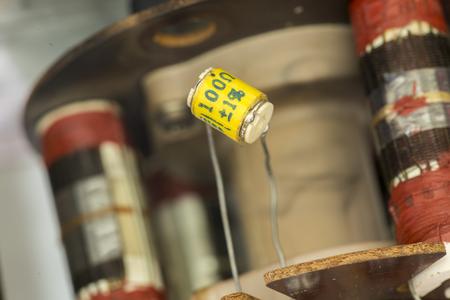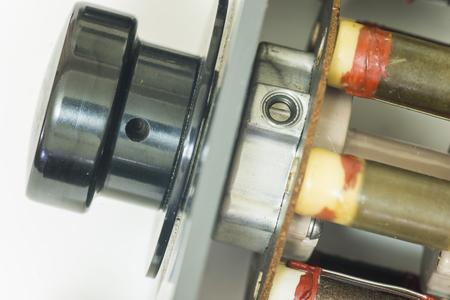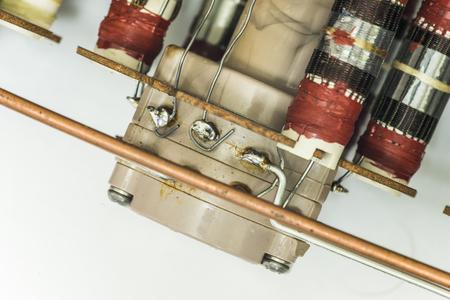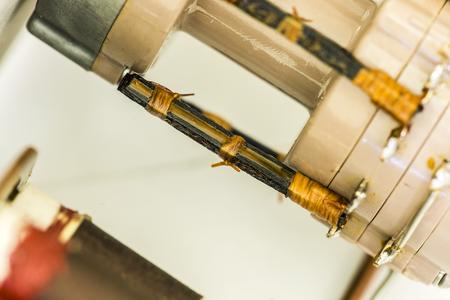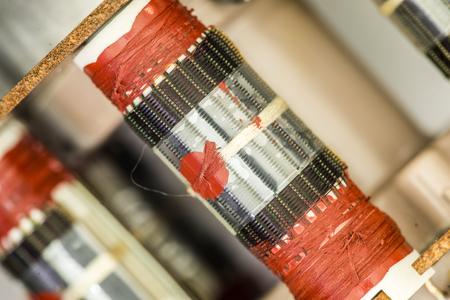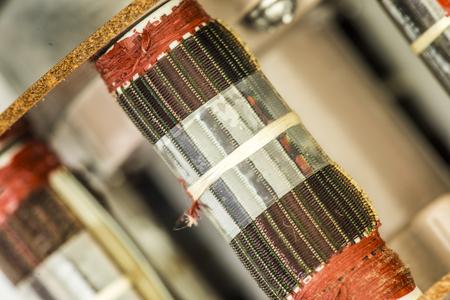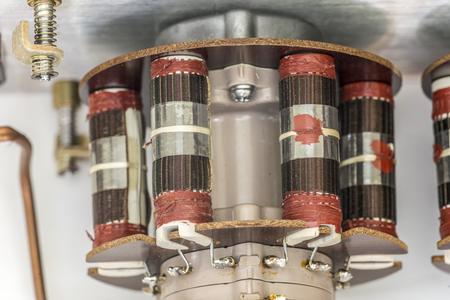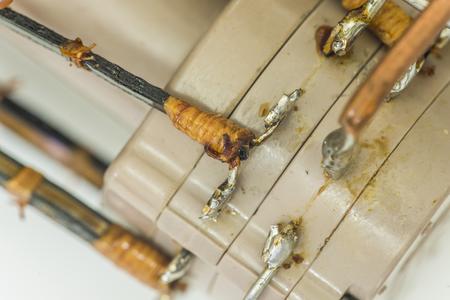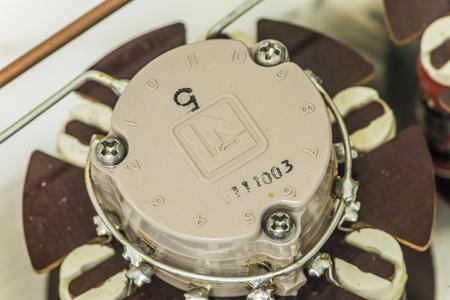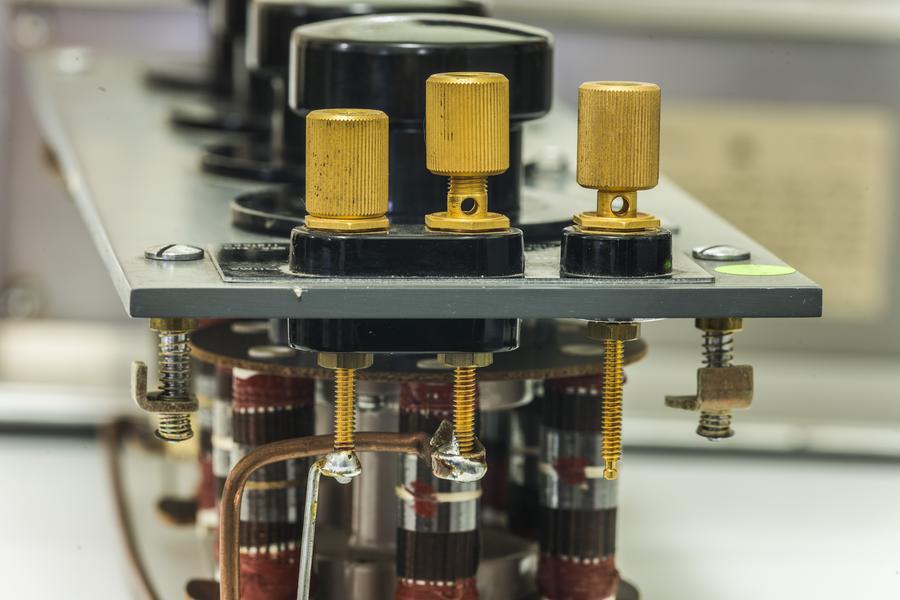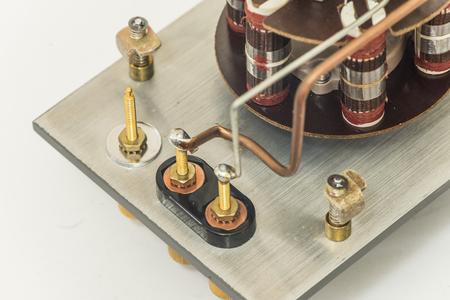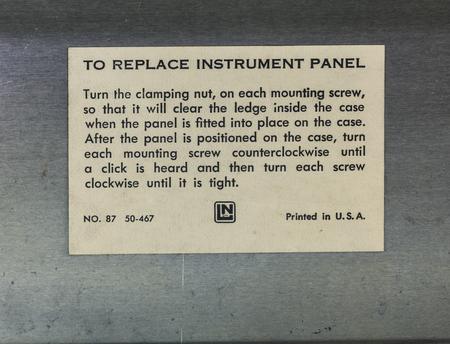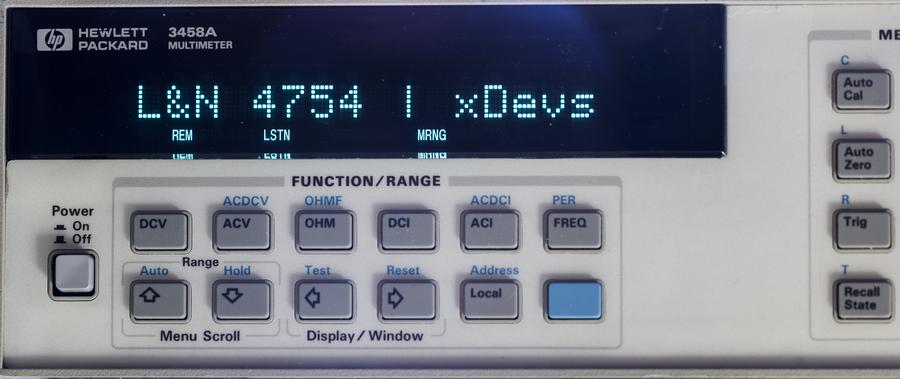Contents
Introduction
Well known fact that good stable resistor is not cheap thing. Most of common resistors are rated for temperature coefficient 100 or even 250 ppm/K. 100 ppm means that every 1°C of temperature change resistance would change 100 ppm or 0.01%. While it’s very little change for most of applications and circuits, for precision work it’s not suitable at all. Let’s imagine you want use resistor to make calibration voltage source for 5½-digit DMM. Even cheap benchtop DMMs can have accuracy about 0.05%, usually much better. This means if we use
resistor which may drift 0.01%/°C we will fail the calibration, with temperature change only 5°C.
One problem comes from this in prototyping work, as you may not know which resistance value your final circuit may need. Buy lots of precision stable resistors? That could easily overwhelm project cost to hundreds of dollars, in a blink of an eye. Often good solution to use decade resistance boxes. They are simple boxes with array of very good fixed resistors, selected by decade high-quality rotary switches. Some good theory of how it works and what is generic idea of resistance box is covered in this Sparkfun article
Resistor we will look at today is same idea, but manufactured by well respected Leeds & Northrup Model 4754, which is 4-decade resistor, with maximum value 1100 Ω.
I was lucky to find old L&N catalog with mention of this resistor model.
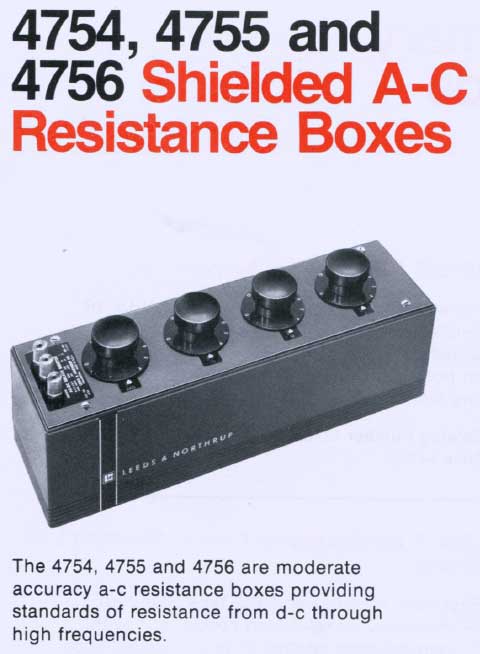
L&N, the famous manufacturer of precision DC electrical measurement and test equipment, was founded as the Morris E. Leeds Co in 1899 by Leeds (b. 1869) who had previously worked for Queen & Co. in Philadelphia. Edwin Northrup (b. 1866), a physics professor at the University of Texas, joined him in 1903 and the name was changed to Leeds and Northrup. Northrup designed many of their early instruments but left the company in 1910 to join the faculty at Princeton University. L&N later sold their resistance business, but as company they are still around.
Let’s take a look on specsheet:

Exterior and interior
It is a bit dirty, but still in very usable conditions, given amount of years this thing passed. Let’s see if there are any caveats inside..
Gold-plated terminals are very nice and accept non-shroded banana plugs, lugs or bare wires with ease, similar to most of metrology equipment.
Aluminum chassis is very sturdy and will protect innards of box even with harsh treatment :). By releasing four screw locks front plate with everything on it comes off easily.
Woops! One of 100 Ω resistors was blown and replaced with more simple wirewound one. Testing will reveal if that is suitable repair.
Not a pleasant surprise, but it’s inevitable risk of buying second-hand gear from secondary market. I paid for it 100$ USD (80$ of which was for international shipping), so it’s not worth to complain about. It was listed as used and as Guaranteed to be in good working order & within factory specs.
Construction is well thought and solid. Custom L&N decade rotary switches are encapsulated, and while not as fancy as in high-end modern decades, still are very decent. Switch contacts are covered in flux a bit, but that should not affect performance in any way.
Close-up on resistance elements, from lowest 1 Ω decade, which have narrow low-resistance elements, to wirewound higher resistance ones.
Each decade using same resistor value, with rotary switch shorting array in middle points to get specific value.
There are no trimpots or jumpers elsewhere, these resistor boxes are not adjustable in usual manner. Decades have usually well matched resistors, to ensure linearity and accuracy, as well as uniform temperature coefficient.
Switches have genuine L&N logo on them and some manufacturing marking.
One last look on wiring and terminals:
Performance and verification
Used my poor HP 3458A, in 4W Ωs mode with OCOMP ON, 100NPLC to measure this resistor. DMM was calibrated to Keithley 2001 just before measurements, so no drift could impact accuracy, as measurements were taken during ~10 minutes only.
Below some key measurement thumbnails. Click to see original photo:
- First connect meter 4W to decade resistor. Set all decades to zero.
- Null meter using offset(relative) function. This will be our zero referenc, which later deducted from all measurements
- Adjust decades, measure resistance.
To automate things I made quick dirty python app:
# xDevs.com resistor decade test app
# http://xdevs.com/review/ln4754/
import sys
import Gpib
import time
inst = Gpib.Gpib(0,3, timeout=50) # 3458A GPIB Address = 3
inst.clear()
#Setup HP 3458A
inst.write("PRESET NORM")
inst.write("OFORMAT ASCII")
inst.write("BEEP")
inst.write("OHMF 10")
inst.write("TARM HOLD")
inst.write("TRIG AUTO")
inst.write("NPLC 100")
inst.write("OCOMP ON")
inst.write("AZERO ON")
inst.write("LFILTER ON")
inst.write("NRDGS 1,AUTO")
inst.write("MEM OFF")
inst.write("END ALWAYS")
inst.write("NDIG 9")
inst.write("DISP MSG,\"L&N 4754 | xDevs.com\"")
inst.write("DISP ON")
min = 0
decad = 0
tread = 4
temp = 36.5
inst.write("TEMP?")
temp = float(inst.read())
level = 10000.0000
ppm = 0
zero_ofs = 0
rval = 0
set = [1,10,100,1000,10000]
with open('ln_res_3458_nplc20.csv', 'a') as o:
o.write("date;res;setting;temp;ppm_level;\r\n")
o.close()
print ("Set resistor to zero ohm")
inst.write("TARM SGL,1")
zero_ofs = float(inst.read())
print ("RZ = %f" % zero_ofs)
with open('ln_res_3458_nplc20.csv', 'a') as o:
o.write("RZ = %f;\r\n" % zero_ofs)
o.close()
while decad < 4:
print ("RANGE %d" % (set[decad]*10))
inst.write("OHMF %d" % (set[decad]*10))
while min <= 10:
with open('ln_res_3458_nplc20.csv', 'a') as o:
tread = tread - 1
inst.write("TARM SGL,1")
inst.write("TEMP?")
temp = float(inst.read())
print ("Set resistor to %d ohm" % (min*set[decad]))
time.sleep(3)
inst.write("BEEP")
inst.write("TARM SGL,1")
rval = float(inst.read())
rval = 0
while (tread != 0):
inst.write("TARM SGL,1")
rval = rval + float(inst.read())
print("SMPL")
tread = tread - 1
print ("R=%f sum, Ravg = %f R" % (rval,rval/3))
tread = 4
rval = rval/3
ppm = ((rval / ((min*set[decad])-zero_ofs))-1)*1E6
print time.strftime("%d/%m/%Y-%H:%M:%S;") + ("[%5dR]: %5.5f , dev %4.4f ppm" % (min*set[decad], (rval-zero_ofs),float(ppm) ) )
o.write (time.strftime("%d/%m/%Y-%H:%M:%S;") + ("%5.5f;%5.3f;%3.1f;%4.4f;\r\n" % (min*set[decad], (rval-zero_ofs),temp,float(ppm) ) ))
o.close()
min += 1
min = 0
decad += 1
You can download this application here
4W Measurements data from 3458A @ CAL to Keithley 2001
RAW data captured in CSV format
| L&N 4754 @ 3458A 4W scan | ||||||||||
| Resistance, ohms | Accuracy, ppm | |||||||||
| 1 | 10 | 100 | 1000 | 1 | 10 | 100 | 1000 | |||
| 1 | 1.000 | 9.998 | 100.099 | 1000.295 | 1 | N/A | -200.0 | 990.0 | 295.0 | |
| 2 | 2.001 | 19.999 | 200.189 | 2000.404 | 2 | N/A | -50.0 | 945.0 | 202.0 | |
| 3 | 3.003 | 30.000 | 300.091 | 3000.406 | 3 | 1000.0 | 0.0 | 303.3 | 135.3 | |
| 4 | 4.004 | 40.001 | 400.181 | 4000.513 | 4 | 1000.0 | 25.0 | 452.5 | 128.2 | |
| 5 | 5.007 | 50.005 | 500.073 | 5000.360 | 5 | 1400.0 | 100.0 | 146.0 | 72.0 | |
| 6 | 6.008 | 60.005 | 600.162 | 6000.465 | 6 | 1333.3 | 83.3 | 270.0 | 77.5 | |
| 7 | 7.011 | 70.004 | 700.067 | 7000.460 | 7 | 1571.4 | 57.1 | 95.7 | 65.7 | |
| 8 | 8.011 | 80.003 | 800.156 | 8000.566 | 8 | 1375.0 | 37.5 | 195.0 | 70.7 | |
| 9 | 9.012 | 90.013 | 900.037 | 9000.609 | 9 | 1333.3 | 144.4 | 41.1 | 67.7 | |
| 10 | 10.012 | 100.012 | 1000.125 | 10000.712 | 10 | 1200.0 | 120.0 | 125.0 | 71.2 | |
Hope you enjoy this quick review. Let us know if you have any details or datasheet about this L&N decade resistor.
Projects like this are born from passion and a desire to share how things work. Education is the foundation of a healthy society - especially important in today's volatile world. xDevs began as a personal project notepad in Kherson, Ukraine back in 2008 and has grown with support of passionate readers just like you. There are no (and never will be) any ads, sponsors or shareholders behind xDevs.com, just a commitment to inspire and help learning. If you are in a position to help others like us, please consider supporting xDevs.com’s home-country Ukraine in its defense of freedom to speak, freedom to live in peace and freedom to choose their way. You can use official site to support Ukraine – United24 or Help99. Every cent counts.
Modified: Dec. 16, 2015, 5:05 p.m.

